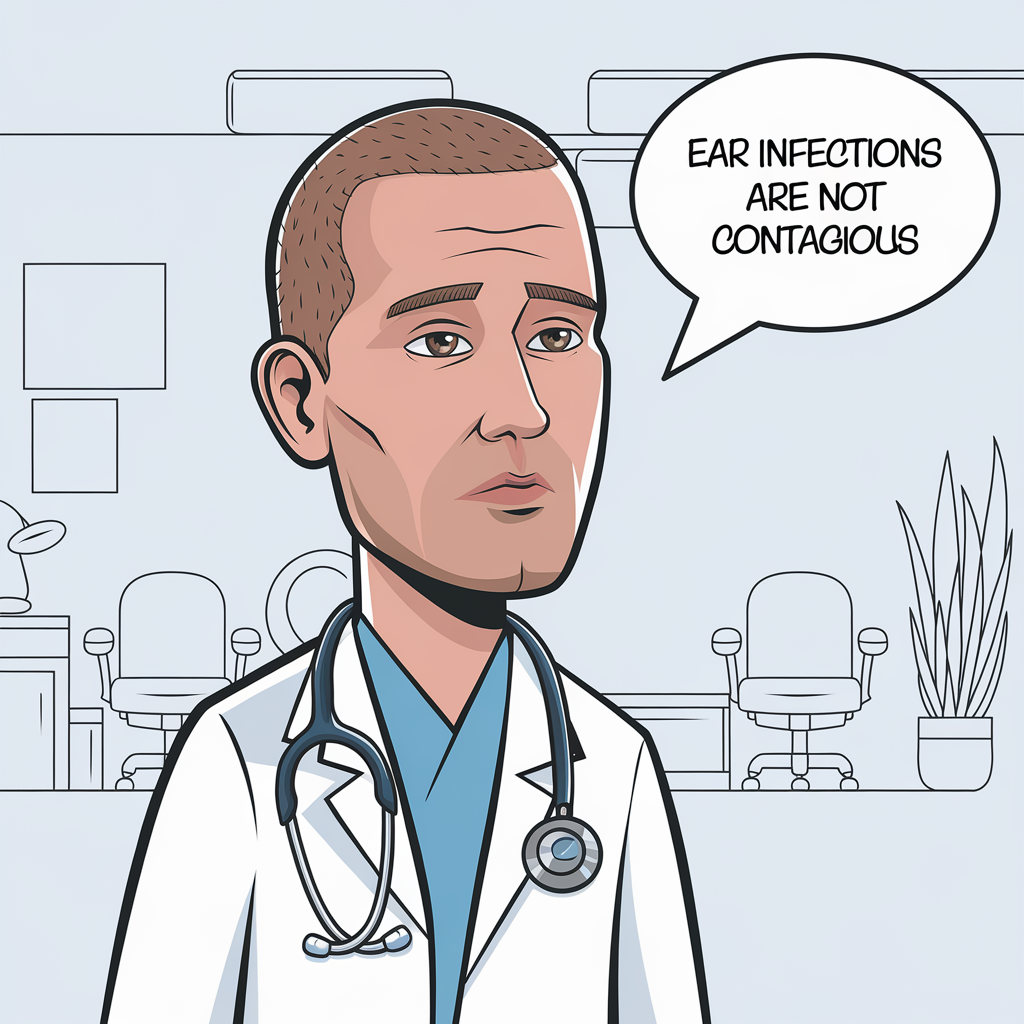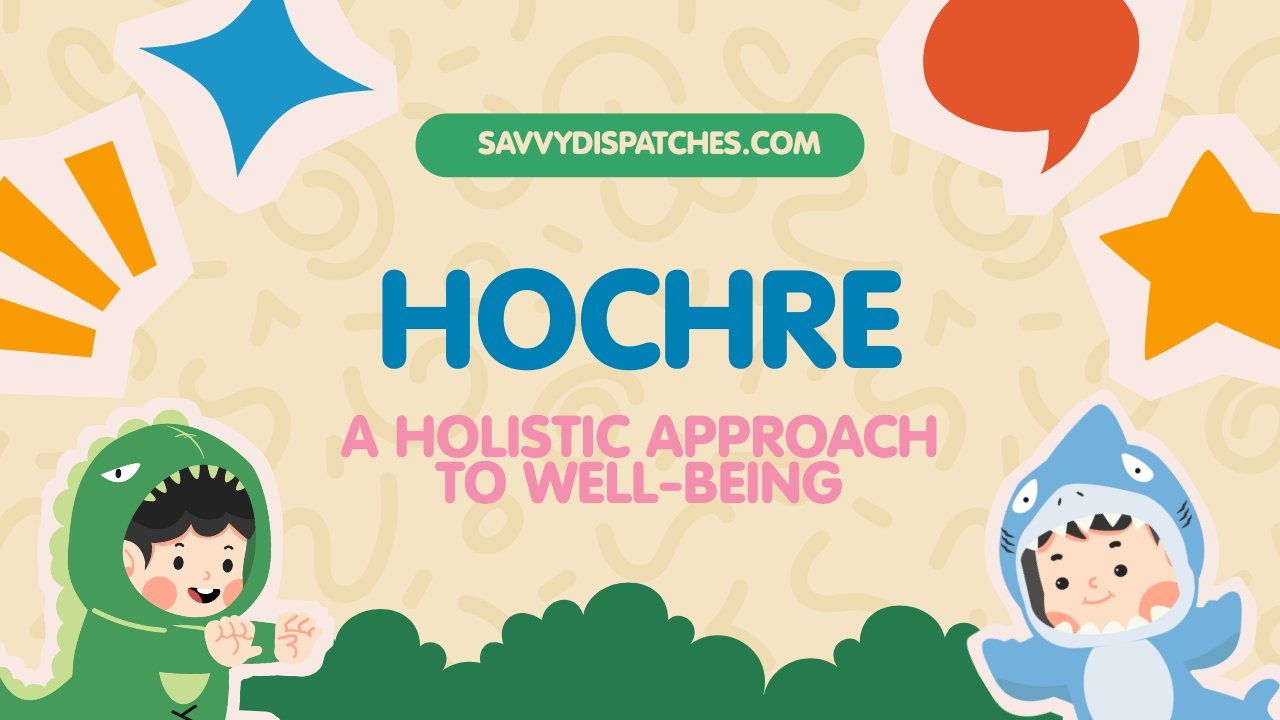Health & Fitness
Are Ear Infections Contagious? Must-Know Facts!

Ear infections can be a real pain—literally and figuratively. If you’ve ever experienced that throbbing pressure in your ear or watched someone struggle with discomfort, you know just how bothersome they can be. But beyond the pain, there’s often confusion surrounding these pesky infections. One of the most common questions is whether ear infections are contagious. This query sparks concern for parents, caregivers, and anyone who has dealt with recurrent episodes themselves.
In this blog post, we will dive into the essentials of ear infections: what causes them, their contagiousness—or lack thereof—and effective ways to prevent and treat them. Let’s unravel these must-know facts together!
Understanding Ear Infections
Ear infections occur when bacteria or viruses invade the middle ear, leading to inflammation and fluid buildup. They are most common in children but can affect individuals of all ages.
The middle ear is an air-filled space behind the eardrum. When it becomes infected, symptoms like pain, fever, and irritability often arise. This discomfort can range from mild to severe.
Different types of ear infections exist—acute otitis media is one of them. It usually develops suddenly and can be quite painful. On the other hand, otitis media with effusion involves fluid accumulation without infection signs.
Understanding how these infections develop helps in prevention and treatment strategies. Identifying symptoms early is crucial for effective management and relief from discomfort associated with ear issues.
Causes of Ear Infections
Are Ear Infections Contagious? Ear infections arise from various factors, primarily involving bacteria and viruses. These pathogens can enter the middle ear when the Eustachian tubes become blocked or swollen.
Allergies are a common culprit. They cause inflammation that disrupts the normal drainage of fluid in the ears. This buildup creates an ideal environment for germs to thrive.
Colds and sinus infections also play a role. When you’re battling respiratory issues, mucus can accumulate and lead to an infection in the ear.
Young children are especially vulnerable due to their anatomy. Their Eustachian tubes are shorter and more horizontal, making it easier for bacteria to reach the middle ear.
Environmental factors contribute as well. Exposure to secondhand smoke or pollution can irritate nasal passages, increasing infection risk significantly. Understanding these causes is vital in managing prevention strategies effectively.
Contagiousness of Ear Infections
Ear infections are often a source of concern, especially when it comes to their spread. The good news is that ear infections themselves aren’t contagious. You can’t catch an ear infection from someone else like you would the flu or a cold.
They typically arise from bacteria or viruses that cause upper respiratory issues. When these pathogens infect the middle ear, an infection may develop. So while you might be exposed to germs through close contact with someone who has a respiratory illness, this doesn’t mean you’ll end up with an ear infection.
However, children are particularly prone due to their developing immune systems and anatomy. If your child has been diagnosed with one, it’s essential to monitor for any signs in other family members but remember—it’s not about contagion; it’s more about shared environments and illnesses leading up to the infection.
How to Prevent the Spread of Ear Infections
To prevent the spread of ear infections, practicing good hygiene is vital. Encourage regular hand washing. This simple act can eliminate bacteria and viruses that may lead to infections.
Avoid close contact with individuals who have respiratory illnesses. Ear infections often follow colds or sinusitis, so reducing exposure can be beneficial.
For children, limit the sharing of toys or utensils. Germs can easily transfer through these items.
Keep your living environment clean. Regularly disinfect surfaces that are frequently touched, such as doorknobs and tabletops.
If you’re prone to allergies or respiratory issues, manage them proactively. Allergies can increase susceptibility to ear infections by causing inflammation in the nasal passages and sinuses.
Stay updated on vaccinations for both children and adults. Vaccines like the flu shot help reduce illness rates that could contribute to ear infection development.
Treatment Options for Ear Infections
Treating ear infections often begins with a visit to your healthcare provider. They’ll evaluate the severity and type of infection before recommending a course of action.
Antibiotics are commonly prescribed for bacterial infections. It’s crucial to complete the entire course, even if symptoms improve quickly.
For mild cases, over-the-counter pain relievers can help manage discomfort while your body fights off the infection.
Warm compresses applied to the affected ear may also alleviate pain and promote drainage.
In some instances, doctors might suggest watchful waiting for minor cases where symptoms are manageable.
If you experience frequent ear infections, further evaluation may be necessary. A specialist might discuss options like tympanostomy tubes to prevent future occurrences.
Always consult a healthcare professional for tailored advice based on individual health needs and circumstances related to ear infections.
When to Seek Medical Attention
If you or your child are experiencing severe ear pain, it’s time to consult a healthcare professional. Pain that disrupts daily activities can indicate a more serious issue.
Notice persistent fever accompanying the earache? This could signal an infection needing prompt evaluation.
Watch for fluid drainage from the ear. If it’s accompanied by blood or pus, don’t wait—seek medical help immediately.
In cases of hearing loss or balance issues that arise suddenly, these symptoms warrant urgent attention. They may suggest complications related to an ear infection.
Children who seem unusually irritable and clingy might be struggling with discomfort too subtle for adults to detect. Trust your instincts; if something feels off, reach out for advice.
If previous treatments haven’t worked and symptoms persist beyond a few days, reaching out is crucial for proper care and relief options.
Conclusion
Are Ear Infections Contagious? Ear infections can be a source of concern for many, particularly when it comes to understanding their contagiousness. While the conditions that lead to ear infections can stem from viral or bacterial sources, it’s essential to remember that the infection itself isn’t spread through casual contact. Awareness of the causes and symptoms is crucial.
Preventing ear infections involves good hygiene practices and being mindful of respiratory illnesses. If an infection does occur, various treatment options are available, ranging from at-home remedies to medical intervention.
It’s always wise to consult with a healthcare professional if you suspect an ear infection or notice persistent symptoms. Being informed empowers you and helps ensure your health remains a priority.
Health & Fitness
Hochre: A Holistic Approach to Well-Being

In a world where stress, anxiety, and physical ailments often dominate our lives, the pursuit of holistic well-being has never been more important. Enter Hochre—a refreshing approach that seeks to harmonize every facet of your existence. Imagine a method that doesn’t just focus on one aspect of health but embraces the entirety of your being. From nurturing your body to fostering emotional resilience and spiritual awareness, Hochre offers a comprehensive path to wellness designed for modern-day challenges. Whether you’re overwhelmed by daily pressures or simply looking for balance amidst chaos, this holistic philosophy might be the game-changer you need. Ready to explore what Hochre can do for you? Let’s dive in!
The Founding Principles of Hochre
Hochre emerged from a desire to create balance in life. Its founders believed that well-being should not be one-dimensional. They emphasized the importance of integrating various aspects of health.
At its core, Hochre champions holistic living. It encourages individuals to nurture their bodies, minds, emotions, and spirits equally. This interconnectedness fosters resilience against life’s challenges.
The approach is rooted in ancient wisdom combined with modern science. It draws inspiration from diverse cultures while incorporating contemporary insights into mental health and wellness practices.
Community plays a crucial role within Hochre’s framework. Support systems, shared experiences, and collective growth are vital components that enhance personal journeys toward well-being.
These founding principles serve as guiding lights for practitioners seeking harmony in all facets of life. Through this philosophy, Hochre empowers individuals to take charge of their own paths to fulfillment.
The Four Pillars of Well-Being:
The four pillars of well-being in Hochre form a comprehensive framework for holistic health. Each pillar supports and enhances the others, creating balance in life.
Physical health focuses on body vitality. Regular exercise, proper nutrition, and adequate rest are key components. A healthy body fosters energy and resilience.
Mental health addresses cognitive function and clarity. Techniques such as mindfulness or meditation help alleviate stress. Engaging with challenging activities can also sharpen your mind.
Emotional health is about understanding feelings and managing relationships. It encourages emotional intelligence through self-reflection and communication skills to nurture connections with others.
Spiritual health emphasizes connection to something greater than oneself. This could be through nature, community involvement, or personal beliefs that resonate deeply within you. Cultivating this aspect often leads to profound peace and purpose in daily life.
A. Physical Health
Physical health is the cornerstone of Hochre. It emphasizes a balanced lifestyle that nurtures your body through proper nutrition, regular exercise, and adequate rest.
Incorporating wholesome foods into your diet fuels not just your body but also your mind. Whole grains, lean proteins, fruits, and vegetables are essential components of this approach.
Exercise plays a crucial role as well. Whether it’s yoga, running, or dancing—movement releases endorphins that elevate mood and improve overall well-being.
Rest cannot be overlooked either. Quality sleep rejuvenates the body and sharpens mental clarity.
All these elements work together to create harmony within oneself. The goal isn’t perfection; it’s about finding what feels right for you personally in nurturing physical health while embracing life’s journey.
B. Mental Health
Mental health is a cornerstone of the Hochre philosophy. It emphasizes the importance of nurturing our minds just as we do our bodies. A balanced mental state enhances clarity, focus, and overall well-being.
Practitioners are encouraged to engage in activities that stimulate cognitive function and emotional resilience. Mindfulness meditation is often highlighted as an effective tool within this framework. It helps individuals manage stress and fosters a deeper connection with their thoughts.
Building strong social connections also plays a vital role in mental health according to Hochre principles. Engaging with friends or community groups can alleviate feelings of isolation and loneliness.
Additionally, self-reflection through journaling allows for emotional expression and personal growth. Recognizing one’s thoughts can lead to greater self-awareness, paving the way for healthier coping mechanisms when faced with challenges.
Incorporating these practices not only supports mental wellness but enriches every aspect of life under the holistic umbrella of Hochre.
C. Emotional Health
Emotional health is a vital component of the Hochre philosophy. It influences how we manage stress, relate to others, and make choices in our daily lives. Understanding and nurturing this aspect can lead to more balanced interactions.
Recognizing emotions rather than suppressing them is crucial. This awareness allows individuals to navigate their feelings effectively, transforming negative experiences into opportunities for growth.
Hochre encourages practices such as journaling or mindfulness meditation to enhance emotional resilience. These tools empower practitioners to process their feelings constructively.
Moreover, fostering healthy relationships plays a significant role in emotional well-being. Connecting with supportive networks creates an environment where individuals feel valued and understood.
By prioritizing emotional health within the framework of Hochre, practitioners often experience greater clarity and satisfaction in life’s journey.
D. Spiritual Health
Spiritual health is a vital component of the Hochre approach. It’s about finding purpose and connection beyond the physical realm.
Engaging in practices like meditation, mindfulness, or prayer can enhance this aspect of well-being. These activities help to ground individuals and foster a deeper understanding of their place in the universe.
Exploring one’s beliefs, values, and experiences can lead to profound insights. This journey often encourages personal growth and self-awareness.
Moreover, spiritual health nurtures relationships with others. When people feel connected spiritually, they tend to cultivate empathy and compassion towards those around them.
Incorporating rituals or spending time in nature can also elevate one’s spiritual state. Each person’s path is unique; what resonates deeply for one may differ for another.
Recognizing this diversity enriches the collective experience within Hochre’s framework.
Incorporating Hochre into Your Daily Life
Incorporating Hochre into your daily life can be transformative. Start by setting aside a few minutes each day for mindfulness practices. Meditation or deep breathing exercises can help ground you.
Consider integrating physical activities that resonate with your body’s needs. Whether it’s yoga, jogging, or dancing in your living room, movement is vital to the Hochre approach.
Nutrition also plays a crucial role. Focus on whole foods and stay hydrated throughout the day. Meal planning can make healthy eating easier and more enjoyable.
Emotional well-being requires attention too. Journaling is an effective way to process feelings and reflect on experiences.
Engage with nature whenever possible; even short walks in green spaces can rejuvenate your spirit.
Find community connections that inspire you—join groups or attend workshops centered around holistic health principles. Each small step adds up toward embracing the essence of Hochre in everyday life.
Success Stories from Hochre Practitioners
Many individuals have embraced Hochre and experienced transformative changes in their lives. One practitioner, Sarah, found relief from chronic anxiety through the holistic techniques offered by Hochre. Daily meditation and mindful movements allowed her to reconnect with her body.
John, a former athlete sidelined by injury, discovered that incorporating the four pillars of well-being helped him regain not just his physical strength but also his mental clarity. He now shares his journey on social media to inspire others.
Another success story comes from Maria, who balanced her emotional well-being after years of turmoil. Through journaling and community support within the Hochre framework, she learned to process her feelings more effectively.
These testimonies illustrate how diverse experiences can be when applying Hochre principles. Each person’s path highlights unique aspects of healing and growth that resonate deeply within their journeys toward wellness.
Criticisms and Controversies Surrounding Hochre
Despite its growing popularity, Hochre has not escaped criticism. Skeptics argue that the approach lacks scientific backing. They question whether a holistic model can truly address complex health issues.
Some practitioners have faced scrutiny over their qualifications. Critics suggest that anyone can claim to be a Hochre expert without formal training. This raises concerns about misinformation and potential harm.
Another point of contention is the cost associated with some Hochre programs and workshops. Many view these as barriers to access for those genuinely seeking wellness solutions.
Additionally, some individuals feel overwhelmed by the commitment required in practicing Hochre principles daily. The demand for balance across all four pillars can lead to stress rather than relief.
Discussions around Hochre often ignite passionate debates within wellness communities, leaving many still searching for clarity on its effectiveness and authenticity.
Conclusion: Is Hochre Right for You?
Exploring Hochre offers a unique perspective on well-being. Its holistic approach emphasizes the interconnectedness of physical, mental, emotional, and spiritual health. By addressing all aspects of life, it encourages individuals to seek balance and harmony.
Adopting Hochre into your daily routine can be transformative. However, it’s essential to consider personal preferences and needs when evaluating new wellness practices. Some may find its principles resonate deeply with their lifestyles while others might prefer more conventional approaches.
The decision lies in individual exploration. Assess how you feel about the four pillars of well-being that Hochre promotes. Whether through physical activity or mindfulness meditation, finding what works best for you can enhance your journey toward optimal health and happiness.
Health & Fitness
Attrities: Conditions That Cause Joint Inflammation & Pain

Joint pain can be a constant companion for many, and understanding the underlying causes is crucial. Enter attrities, a term that encompasses various conditions leading to joint inflammation and discomfort. Whether it creeps in slowly or strikes suddenly, knowing more about attrities can empower those affected to seek relief and regain control over their lives. Let’s dive into the different types of attrities that impact millions worldwide, uncovering what sets them apart and how they manifest in our bodies. From osteoarthritis to autoimmune responses, we’ll explore the complexities of these conditions together.
Osteoarthritis: The Most Common Type of Attrities
Osteoarthritis is the most prevalent form of attrities, impacting millions worldwide. It primarily affects weight-bearing joints like knees, hips, and the spine.
This condition results from wear and tear on cartilage over time. As cartilage deteriorates, bones may rub against each other. This friction can lead to pain and stiffness.
Symptoms often develop gradually. Individuals may notice swelling or a reduced range of motion in affected areas. Morning stiffness is common but tends to improve with movement throughout the day.
Age is a significant risk factor for osteoarthritis, but genetics can also play a role. Obesity increases stress on joints, making it more likely for this condition to occur.
While there’s no cure for osteoarthritis, various management options are available that focus on alleviating symptoms and improving quality of life.
Rheumatoid Arthritis: An Autoimmune Disease
Rheumatoid arthritis is a chronic autoimmune disease that primarily affects the joints. Unlike osteoarthritis, which results from wear and tear, rheumatoid arthritis occurs when the immune system mistakenly attacks healthy joint tissues.
People with this condition often experience swelling, stiffness, and pain in their joints. Morning stiffness lasting for hours can be particularly debilitating. Over time, inflammation may damage cartilage and bone.
This type of attrities can also affect other organs and systems in the body. Symptoms might include fatigue, fever, or even weight loss alongside joint issues.
The exact cause remains unclear but genetic factors play a role in susceptibility to this disease. Treatment usually involves medications aimed at reducing inflammation and slowing disease progression while enhancing quality of life.
Gout: A Form of Inflammatory Arthritis
Gout is one of the more notorious forms of inflammatory arthritis. It occurs when uric acid builds up in the bloodstream, leading to sharp crystals forming in the joints.
These crystals can cause intense pain and swelling, often affecting the big toe first. The discomfort may strike suddenly, sometimes at night, disrupting sleep.
Factors contributing to gout include diet, genetics, and certain medical conditions. Foods high in purines—like red meat and shellfish—can exacerbate symptoms. Alcohol consumption is also a known trigger.
Managing gout involves lifestyle changes alongside medication options aimed at reducing uric acid levels. Staying hydrated plays an essential role too; water helps flush out excess uric acid from your system.
Understanding this condition’s nuances can empower individuals to take control of their health through informed decisions about diet and activity levels.
Psoriatic Arthritis: Linked to Skin Condition Psoriasis
Psoriatic arthritis is a chronic condition that intertwines joint inflammation with the skin disorder psoriasis. Individuals with psoriasis often develop this form of arthritis, which can lead to pain and swelling in joints.
The connection between the two conditions lies in their underlying immune response. The same overactive immune system that triggers skin lesions may also attack joints, causing discomfort. Symptoms might vary, but many experience stiffness and reduced mobility.
Furthermore, psoriatic arthritis doesn’t discriminate. It can affect anyone at any age but typically arises between 30 and 50 years old.
Patients may notice nail changes as well; pitting or separation from the nail bed can occur alongside joint issues. This dual impact on both skin and joints makes early recognition essential for effective management strategies tailored to individual needs.
Diagnosis and Treatment Options for Attrities
Diagnosing attrities involves a combination of medical history, physical examinations, and imaging tests. Doctors often start with a thorough interview to understand symptoms and family history. They may ask about the intensity and duration of pain.
Blood tests are essential for identifying types like rheumatoid arthritis or gout. X-rays and MRIs can reveal joint damage or inflammation levels. Early diagnosis is crucial for effective management.
Treatment options vary based on the type of attrities diagnosed. Nonsteroidal anti-inflammatory drugs (NSAIDs) help reduce pain and swelling in many cases. Corticosteroids may be prescribed for more severe inflammatory responses.
For chronic conditions, disease-modifying antirheumatic drugs (DMARDs) are commonly used to slow progression. Physical therapy also plays an important role in maintaining joint function while improving mobility through tailored exercises.
Lifestyle Changes to Manage Symptoms of Attrities
Making simple lifestyle changes can significantly ease the symptoms of attrities. First, consider incorporating regular physical activity into your routine. Low-impact exercises like swimming or walking promote joint flexibility without putting too much strain on them.
Diet also plays a crucial role in managing inflammation. Embrace foods rich in omega-3 fatty acids, such as salmon and walnuts. A diet high in fruits and vegetables can provide essential antioxidants to combat oxidative stress.
Weight management is another important factor. Maintaining a healthy weight reduces pressure on your joints, especially those bearing most of your body weight.
Additionally, staying hydrated helps keep joints lubricated and functioning smoothly. Aim for at least eight glasses of water daily.
Don’t underestimate the power of stress management techniques like yoga or meditation. These practices not only improve mental well-being but may also positively impact physical health by reducing inflammatory responses.
Conclusion
Attrities encompass a range of conditions that lead to joint inflammation and pain, affecting millions worldwide. Understanding the various types—such as osteoarthritis, rheumatoid arthritis, gout, and psoriatic arthritis—can empower individuals to seek appropriate treatment.
Osteoarthritis is the most prevalent type, often stemming from wear and tear on joints over time. Rheumatoid arthritis distinguishes itself as an autoimmune disease where the body mistakenly attacks its tissues. Gout presents itself with sudden flare-ups caused by uric acid buildup. Psoriatic arthritis links joint issues with skin symptoms associated with psoriasis.
Diagnosis typically involves physical examinations, imaging tests like X-rays or MRIs, and blood tests to identify specific markers of inflammation or autoimmunity. Treatment options range from medications such as NSAIDs or corticosteroids to more advanced therapies like biologics for severe cases.
Beyond medical intervention, lifestyle changes play a crucial role in managing attrities symptoms effectively. Regular exercise can enhance mobility while maintaining a healthy weight reduces strain on joints. A balanced diet rich in anti-inflammatory foods also contributes positively to overall well-being.
Exploring these avenues opens up new possibilities for those living with attrities; it’s about finding what works best for you in this journey toward relief and better quality of life.
Health & Fitness
What Should I Do if I Slipped and Injured Myself at Work?

Sometimes accidents happen, even when we are careful. If you slip or fall at work, it can be scary or painful. You might hurt your back, twist your ankle, or even feel too dizzy to stand. The first thing to remember is to stay calm and get help right away so your injury doesn’t get worse.
If your injury is serious or you need help understanding what to do next, talking to a work injury attorney for slip and fall accidents can be a good idea. They can explain your rights, guide you through the steps, and make sure you get the care and support you need.
Tell Someone Right Away
The first thing to do after a fall is to tell your boss or supervisor. Don’t wait, even if the injury seems small. Reporting an accident quickly helps keep you safe and makes sure the workplace can fix what caused the slip. Some workplaces have accident forms you might need to fill out. Doing this right away helps keep things clear and fair for everyone.
Get Medical Help
See a doctor even if the injury doesn’t seem serious, as some sprains, bumps, or back injuries can worsen later. A doctor’s report is also needed for work injury claims. Getting help early makes recovery faster and easier, so don’t try to be brave.
Keep Notes and Photos
Write down the details of the accident as soon as possible, including time, place, and cause. Take a photo of the scene if something like water or oil caused the slip. This helps document what happened and can be useful later for more details.
Tell Your Workmates
Let your coworkers know about the accident so they can stay safe too. If a spill, loose mat, or broken tile made you slip, others might get hurt if it’s not fixed. By speaking up, you also help make your workplace safer for everyone.
Ask About Workers’ Compensation
If you get hurt at work, workers’ compensation insurance can help cover doctor visits, medicine, and lost wages. Ask your boss or HR about starting a claim, and keep copies of all papers and doctor’s notes to avoid delays or confusion, ensuring a smoother process.
Rest and Heal
Getting better takes time, and it’s okay to rest. Follow your doctor’s advice and don’t rush back to work too soon. If the injury affects how you move or lift things, talk to your boss about lighter duties until you recover. Your health comes first, and taking proper care helps you return stronger.
Learn From the Accident
After recovering, reflect on what caused the fall; was it poor lighting, slippery floors, or forgotten signs? Share your experience to help others, just like workplaces do in safety meetings. Your story can make a difference, and staying safe is everyone’s job. Report, get checked, and take care.
Key Takeaways
- Report the accident to your supervisor right away.
- See a doctor for a full check-up.
- Write down what happened and take photos.
- Tell co-workers so they can stay safe.
- Ask about workers’ compensation.
- Rest and follow the doctor’s advice.
- Share what you learned to help prevent future accidents.






